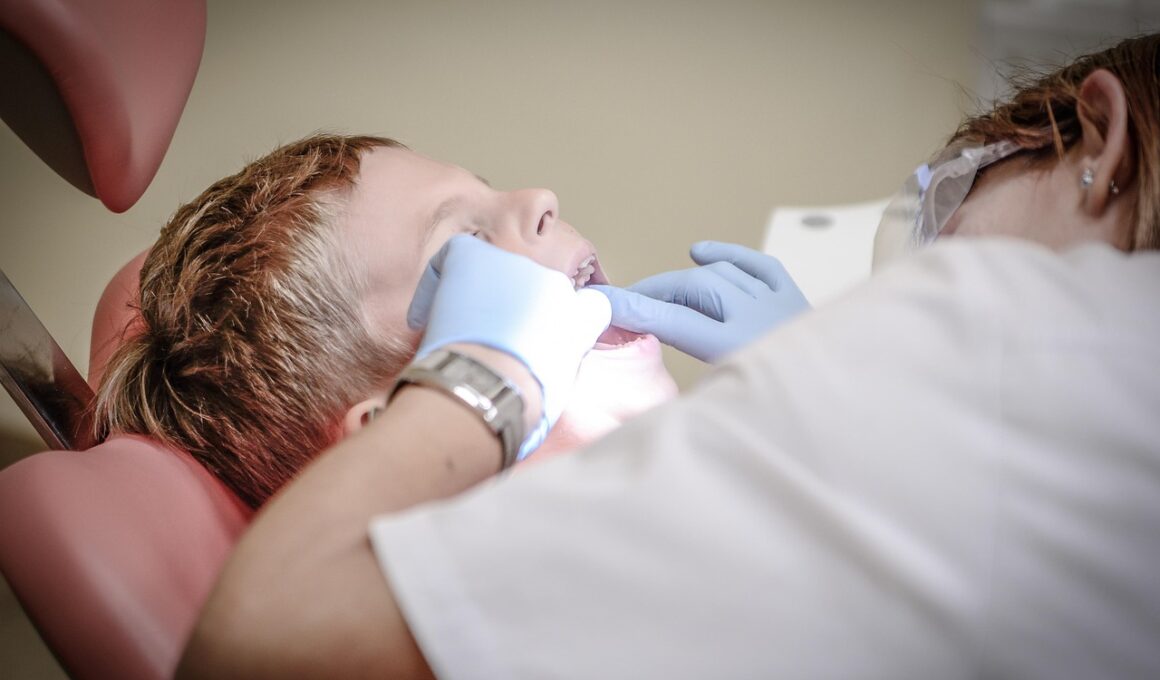Implementing Effective Dog Dental Care Training in Veterinary Clinics
Dental health is an often overlooked yet essential aspect of a dog’s overall well-being. In veterinary clinics, where dental care should be a priority, effective training for staff is crucial. Recognizing that a significant percentage of dogs exhibit dental problems, clinics must devise a comprehensive training program that targets these issues. Through structured training, staff can learn to identify common dental diseases, understand appropriate dental procedures, and become proficient in preventative care techniques. Emphasizing the role of dental hygiene in pet care can inspire clinic staff to promote healthier habits among pet owners. This initiative can lead to reduced incidences of dental disease in patients. Successful training programs should include hands-on experience, engaging interactive workshops, and continual education updates. Moreover, familiarizing staff with the latest dental tools and techniques allows improved efficiency during procedures. Ensuring all veterinary personnel are well-versed in dog dental health can significantly enhance service quality. As a result, effective dog dental care training not only benefits the pets but also elevates the healthcare standards within the clinic, appealing to existing and prospective clients alike.
Effective training initiatives are multi-faceted, but there’s a core curriculum that should be prioritized. Introducing new staff members to the significance of dental care early on sets the tone for their future practices. This training should cover core topics, such as:
- Understanding common dental issues: Staff should learn to recognize periodontal disease, tooth resorption, and other prevalent conditions.
- Preventative measures: Emphasizing the importance of regular dental cleanings, brushing techniques, and proper diet can empower staff to educate pet owners.
- Practical demonstrations: Hands-on experience, including how to perform dental cleanings and use specialized tools, builds confidence.
- Communication skills: Teaching staff how to discuss dental care effectively with pet owners fosters trust.
Following this structured framework ensures staff members are equipped to provide the best dental care. Regular evaluations and refreshers can help maintain staff knowledge and skills, ultimately benefiting the pets they care for. A robust knowledge base allows staff to navigate challenges more confidently.
Innovative teaching methodologies can significantly enhance the learning experience during dog dental care training. Engaging staff through a variety of formats, including lectures, practical sessions, and interactive workshops, keeps their interest and maximizes retention of information. For instance, incorporating role-play scenarios allows staff to practice real-life situations, enhancing their ability to communicate effectively with clients. Interactive online resources can supplement in-person training, offering flexibility for busy clinic schedules. Moreover, using visuals, such as diagrams and videos demonstrating proper techniques, can further reinforce the concepts discussed. It is also essential to ensure that resources are frequently updated with the latest developments in veterinary dental care. Continuous learning should foster a culture of education, where embracing change becomes part of normal clinic practices. Utilizing feedback from the trainees can further tailor training programs to better fit the needs of the staff. Ultimately, a dynamic approach to training significantly boosts the quality of care that dogs receive in veterinary clinics. The enthusiasm and expertise gained during training translate directly into improved dental health outcomes for the pets under their care.
Community Involvement and Owner Education
In addition to empowering veterinary staff, clinics should consider outreach programs to educate dog owners about dental care. Many pet owners are unaware of the importance of dental health, which makes proactive education essential. Organizing community workshops can create awareness while showcasing the clinic’s commitment to responsible pet ownership. These workshops can cover several essential points:
- Signs of dental problems: Teaching owners to notice changes in their dog’s behavior or breath can lead to early detection.
- Home care practices: Demonstrating proper dental hygiene techniques, such as regular brushing, makes it easier for owners to participate.
- Diet considerations: Discussing the impact of nutrition on dental health provides owners with actionable steps to care for their pets.
Involving the community in such educational efforts fosters collaboration and enhances the clinic’s reputation. As trust builds between the clinic and dog owners, the likelihood of successful interventions increases significantly, resulting in healthier dogs and satisfied clients.
Post-training support is as vital as the training itself. Establishing mentorship programs within clinics allows seasoned veterans to guide newly trained staff. By fostering an environment of continued learning, newly trained veterinary personnel can gain confidence in their skills. Mentorship can include regular follow-up meetings where staff can discuss ongoing challenges they face in everyday practice and explore additional resources for help. Continuous learning is essential, given the constantly evolving nature of veterinary medicine. By staying informed about the latest research, techniques, and best practices regarding dog dental care, staff members remain engaged and proactive in their approach. Additionally, clinics can encourage staff to attend external workshops and conferences, promoting broader exposure to new ideas and methodologies. Providing financial support for further training allows staff to deepen their level of expertise. An emphasis on post-training support cultivates a motivated work culture that directly contributes to improved animal health. Strong leaders in a clinic can inspire all veterinary personnel to upskill continuously, enhancing the clinic’s service quality and building trust with clients seeking dental care for their pets.
Measuring Training Effectiveness
To ensure that staff training is effective and yielding the desired outcomes, veterinary clinics need to regularly evaluate programs. Gathering quantitative and qualitative data on the impact of training initiatives holds significant importance. Some practical methods of assessment include:
- Pre- and post-training assessments: Evaluating staff knowledge before and after training can reveal key areas of improvement.
- Client feedback: Surveying pet owners regarding their understanding of dental care can measure training effectiveness.
- Employee feedback: Encouraging staff to provide insights on training impacts fosters improvement.
- Collaboration metrics: Analyzing the growth of dental services and related business can indicate success.
By systematically reviewing these evaluations, clinics can adapt their training approaches and keep enhancing staff knowledge. Continuous assessment creates a culture of excellence, ensuring that dog dental care remains a top priority within veterinary practices.
A successful dog dental care training program can foster a more engaged and knowledgeable team. While implementing these recommendations can seem daunting, the positive effects on both staff and patients are worth the effort. Ultimately, investing in staff education pays dividends through enhanced pet care services, an increase in client satisfaction, and a stronger clinic reputation. Commitment to continuous learning will encourage staff to strive for excellence. Furthermore, implementing a strong training foundation establishes a shared culture of dental health consciousness. As staff become more knowledgeable and confident, they communicate more effectively with pet owners. Clients are then motivated to prioritize the dental health of their dogs based on learned benefits. In time, this leads to fewer dental issues emerging among patients. Continuous staff training ultimately cultivates an environment that aligns with the best practices in veterinary medicine. With ongoing dedication to training, veterinary clinics collectively improve the standard of care for their canine patients. When clinics prioritize dental health as part of their mission, it reflects well upon their commitment to animal welfare and the trust communities place in their services.


